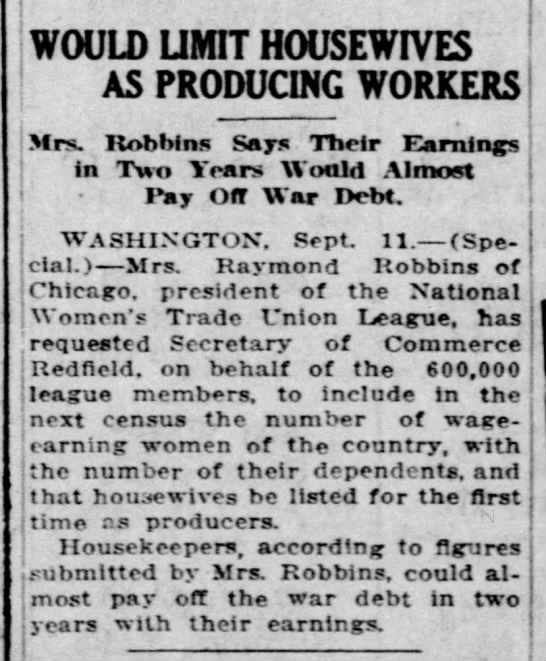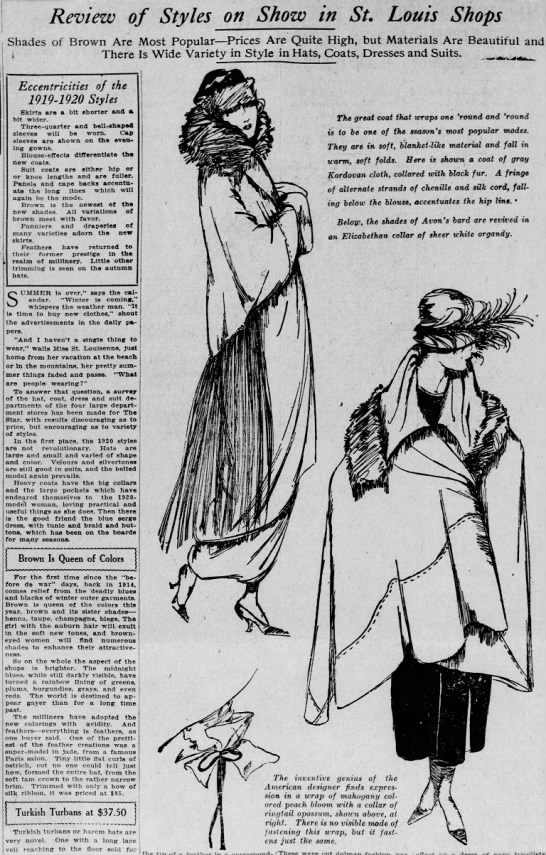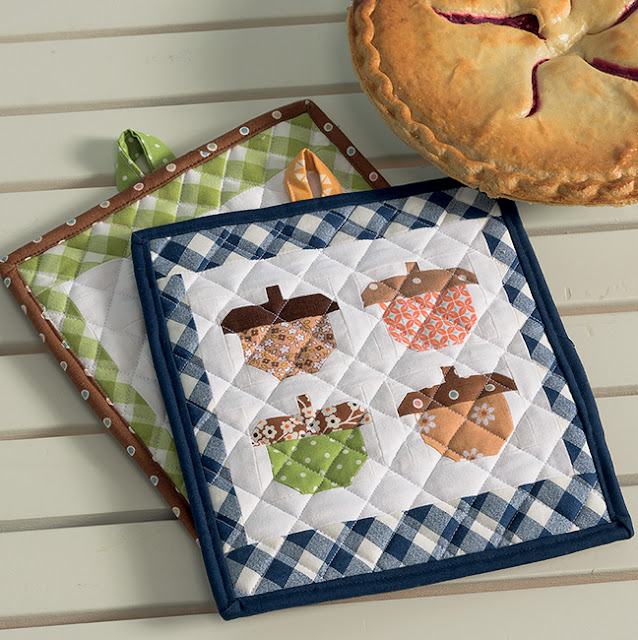 |
| Helen Korngold, Dec. 1919, New York City |
September
Monday 8
At it again.
Tuesday 9
I just won’t have this job.
Wednesday 10
As I think of it, I don’t see how I stuck at it this long.
Thursday 11
Mr. Bush has a teacher now – Thank goodness.
Friday 13
Well, I have #35 anyhow.
Saturday 13
Glad I can rest.
Sunday 14
Mick’s wedding. This was exciting
NOTES:
Sept 11
Earnest F. Bush was the founder and principle of Wellston High School. He appears on the 1917 St. Louis City Directory as the principle of Wellston High School living on Maple. On the April 9, 1940, St. Louis Census he still gave his job as a superintendent in the public school system, although it was then crossed off because he had retired. He died a few months later n July 17, 1940.
Sept 11, 1919, St. Louis Star and Times article tells how the president of the National Women's Trade Union League promoted the inclusion of housekeepers as producers. The NWTUL was organized in 1903. Under the leadership of Mrs. Raymond Robbins the group promoted the needs and protection of working women, an 8-hour workday, and end to child labor, and after the Triangle factory fire, safer worker safety conditions.

On a lighter note--
St Louis Star and Times, Sept. 10, 1919
Brown is the fashionable color.

Eccentricities of the 1919-1920 Styles
Skirts are a bit shorter and a bit wider. Three-quarter and bell-shaped sleeves will be worn. Cap sleeves are shown on the evening gowns. Blouse-effects differentiate the new coats. Suit coats are either hip or knee lengths and are fuller. Panels and cape backs accentuate the long lines which will again be the mode.
Brown is the newest of the new shades. All variations of brown meet with favor.
Panniers and draperies of many varieties adorn the new skirts. Feathers have returned to their former prestige in the realm of millinery. Little other trimming is seen on the autumn hats.
...The 1920 styles are not revolutionary. Hats are large and small and varied of shape and color. Velours and silvertones are still good in suits, and the belted model again prevails. Heavy coats have the big collars and the large pockets which have endeared themselves to the 1920-model woman, loving practical and useful things as she does.
Then there is the good friend the blue serge dress, with tunic and braid and buttons, which has been on the boards for many seasons.
Brown Is Queen of Colors
For the first time since the "before de war" days comes relief from the 'deadly blues and blacks of winter outer garments. Brown is queen of the colors this year, brown and its sister shades henna, taupe, champagne, beige. The girl with the auburn hair will exult in the soft new tones, and brown-eyed women will find numerous shades to enhance their attractiveness.
So on the whole the aspect of the shops is brighter. The midnight blues, while still darkly visible, have turned a rainbow lining of greens, plums, burgundies, grays, and even reds.
The world Is destined to appear gayer than for a long time past. The milliners have adopted the new colorings with avidity. And feathers, everything is feathers, as one buyer said. One of the prettiest of the feather creations was a super-model in Jade, from a famous Paris salon. Tiny little flat curls of ostrich cut no one could tell Just how, formed the entire hat, from the soft tarn crown to the rather narrow brim. Trimmed with only a bow of silk ribbon, it was priced at $85.

































